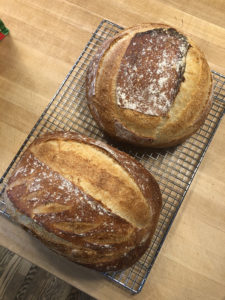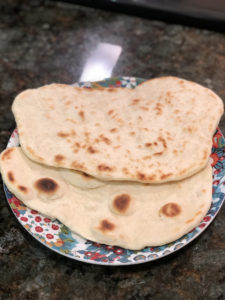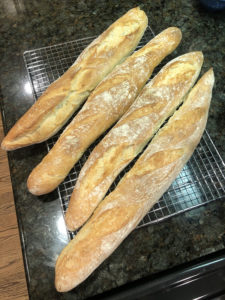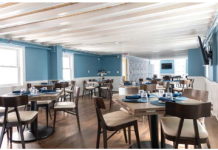
Now is a great time to hone your bread-baking skills, no wood-burning oven required. Simple boules develop a rich brown color and crunchy crust while baking in a pre-heated cast iron pot inside a piping hot (475 degree) oven.
By Elizabeth Wulfhorst
So you’re in the house for a while, right? To limit exposure to the coronavirus and keep others safe people need to stay home which means fewer trips to the grocery store.
But what if there was something you could make to feed your family and, quite possibly, soothe your anxiety over the uncertainty of the current situation?
We’re talking about making bread, the staff of life. Sustenance since humans first figured out how to grind grain. If you’ve been on social media lately you know everyone and their brother is jumping on the bread-baking bandwagon, to varying degrees of success.
At its most basic level, bread consists of flour, water, yeast and salt. Stirred together and left to their own devices, these ingredients will expand, bubble and develop flavor over time. Shape the resulting dough and throw it in a piping hot Dutch oven and you will have a good loaf of crusty bread with very little work in about 24 hours. You will be proud of your creation.
With some extra elbow grease – and surprisingly less time – you can have an even better boule, baguette or bun. A slight tweak of the ingredient ratios and five to 10 minutes of kneading, a few hours proofing and you’ll be donning a beret and speaking French. The bonus? With your hands in dough you can’t hold your phone, so no scrolling through social media, no checking email. You might even relax a little.
A further tweaking of the ingredients, and the addition of some honey and a neutral oil, will lead to a soft loaf easily sliced for sandwiches. A different addition of butter and a few eggs will give you a lovely brioche, the basis for delicious cinnamon rolls or even babka.
Feeling adventurous? And unable to find yeast? Create a starter of flour and water and let the natural yeast present in the air work its magic for a few days. It’s not like you don’t have the time. “Feed” it more flour and water periodically and in about a week you’ll have a sourdough starter, ready to add lift and tang to any loaf, sans yeast. You will swear you hear the clang of a San Francisco streetcar as you take your first bite.

Yeast can be hard to come by right now, so mix up some dough with baking powder instead and enjoy fluffy, crispy flatbreads. Cooked on a skillet, the flatbreads are perfect for pizzas, dip- ping in hummus or as an accompaniment to any meal.
For the most foolproof recipes, turn to kingarthurflour.com. A quick search of “bread” on the website resulted in over 1,000 recipes. My favorites are Walter Sand’s Basic White Bread (perfect for sandwiches) and No-Knead Crusty White Bread (great with soup, stew or sopping up any kind of sauce). Can’t come by yeast? The recipe for skillet flatbreads is a winner. It uses baking powder instead of yeast, takes only about an hour from start to finish and you don’t even have to turn on the oven. After cooking for a few minutes on a very hot skillet, the end product is crispy on the outside, puffy on the inside, similar to Indian naan. The flatbreads can be dipped in hummus, spread with peanut butter or eaten straight from the skillet. They also make the perfect base for flatbread pizzas.
If you want to really make bread baking a new skill, go old school and order Alchemy Bread’s book “Bread Baking for Beginners.” In it, bread maker Bonnie Ohara walks you through the science behind bread making and the simple steps necessary to start your bread-baking journey, from an easy “no-knead” loaf through focaccia, pizza dough and enriched doughs, all the way to baguettes and advanced sourdoughs. She even has a wonderful Instagram account with instructional videos and a link to the tools she recommends if you really want to go all in.
Not every loaf will be perfect. Some may even fail. But you will learn: You will learn chemistry; you will learn patience. You will learn never to accept a grocery store loaf of bread again.

Flour, water, yeast and salt come together into all types of bread. A long, thin shaping of the dough yields a crusty baguette worthy of a French bakery.
No one wants to put our wonderful local bakeries out of business. Once we ride out this storm and things return to “normal,” those bakeries will need our patronage. So consider buying a gift certificate now to keep them in business during this forced closure. And when you get to use it later this spring, go buy their bread, all the while knowing you can make a loaf (almost) as good any time you want to.
This article originally appeared in the April 2nd, 2020 print edition of The Two River Times.














